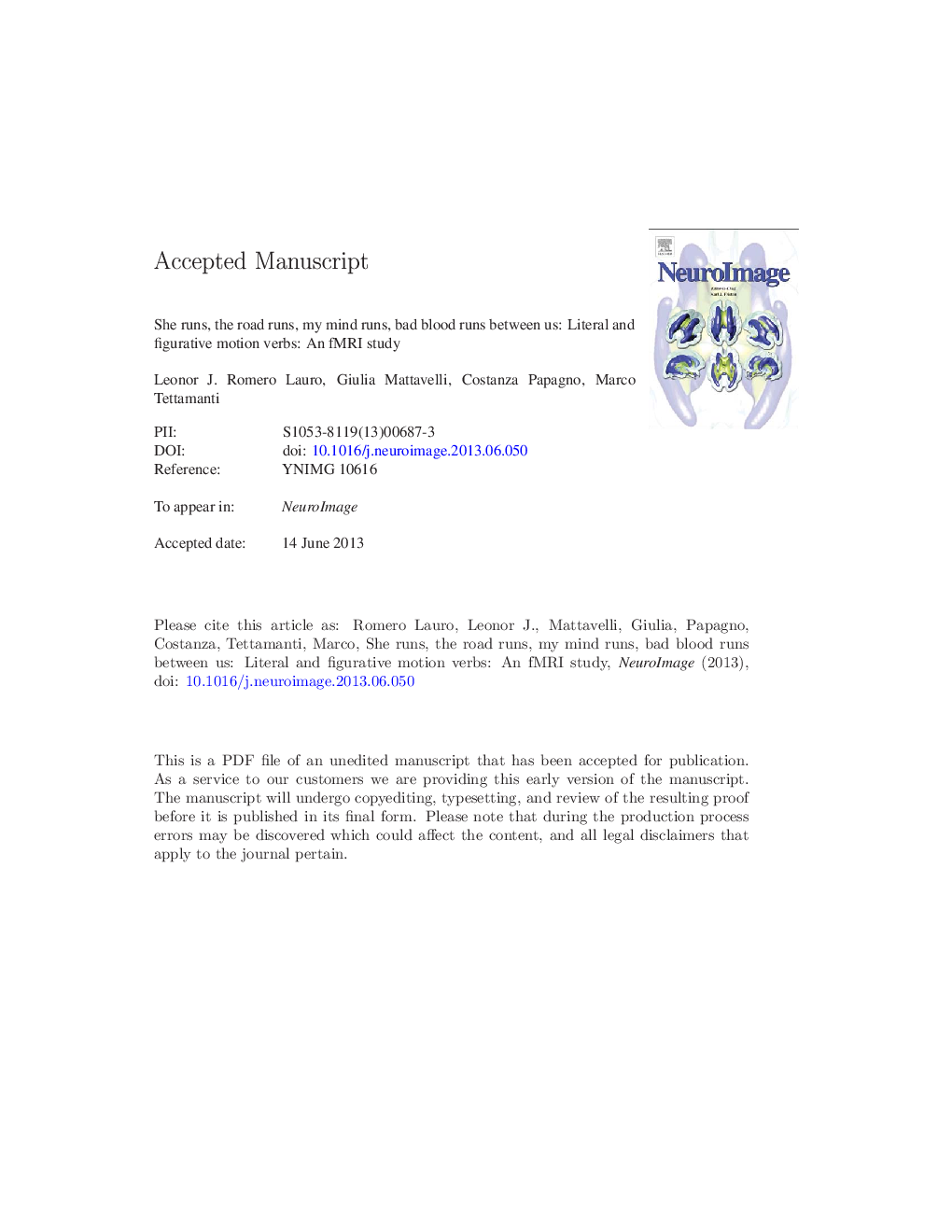| Article ID | Journal | Published Year | Pages | File Type |
|---|---|---|---|---|
| 6028140 | NeuroImage | 2013 | 44 Pages |
Abstract
Here, we contribute to this line of research by investigating the comprehension of motion verbs, used in a literal versus figurative context, in an fMRI study with normal subjects in which the somatotopy of activation was investigated by presenting motion verbs that involve upper vs. lower limbs. A set of sentences including a motion verb used in a literal, fictive (only lower limb), metaphorical, or idiomatic way was studied. Cognition verbs were also included as control. We found that figurative sentences compared to literal ones produced a greater activation of a bilateral fronto-temporal network, in line with previous studies. Moreover, fictive motion activated a more posterior region, involving primary visual areas and motion sensitive visual areas, but also the left middle frontal gyrus. Crucially, the left precentral gyrus was activated in the case of the upper limb for literal and metaphorical motion sentence types, but not idiomatic sentences. For fictive motion, we found a lower limb-related somatotopic effect, also present for literal sentences, while the evidence for metaphorical and idiomatic sentences was less strong. In conclusion, our results confirm that premotor areas are activated by language understanding, but to a different degree depending on the specific literal versus figurative context in which motion verbs appear. Therefore, they support weak embodied views suggesting that the motor system enhances the comprehension of linguistically encoded actions.
Related Topics
Life Sciences
Neuroscience
Cognitive Neuroscience
Authors
Leonor J. Romero Lauro, Giulia Mattavelli, Costanza Papagno, Marco Tettamanti,
